The car screen, once a straightforward navigation tool, has undergone a remarkable transformation. Today, it's not just about pointing drivers in the right direction; it's about enhancing their entire driving experience.
This evolution from a simple map display to a sophisticated digital assistant marks a significant shift in how we interact with our vehicles and the wider world around us. It reflects a broader change in technology, where functionality meets convenience, shaping not only how we drive but also how we live.
As we trace the journey of the car screen from its basic origins to its current role, we uncover a world where driving and digital innovation converge, creating new opportunities for connection, convenience, and commerce.
But first, let's go back to the beginning and learn how it all started.
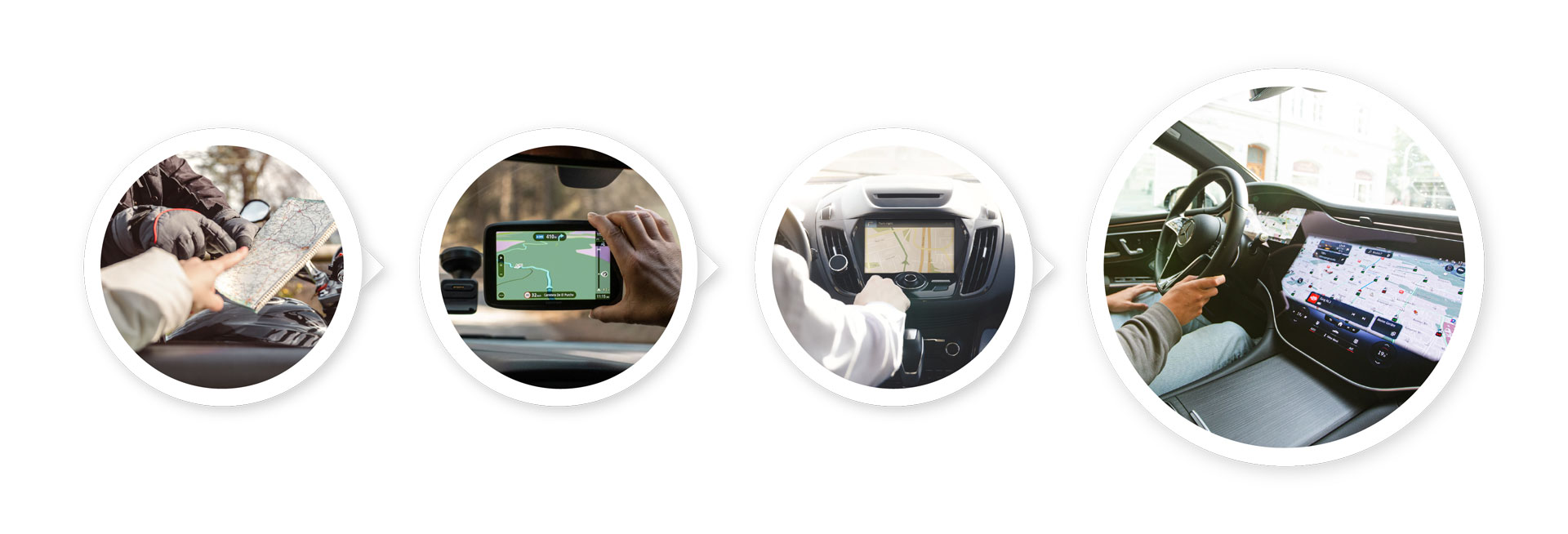
The Early Days of Car Screens
In its infancy, the car screen was a straightforward concept: a tool to assist in navigation.
These early screens were simplistic, offering basic directions and minimal interaction. Their primary function was to provide a visual supplement to traditional maps, making it easier for drivers to reach their destinations.
| 1976 - The First Digital Car Screen: Although Aston Martin can claim the debut of the first in-car digital screen in 1976, it was not until the 1986 Buick Riviera that the first CRT touch screen was introduced. |
The technology was rudimentary by today's standards, with monochrome displays and limited functionality. There was no objective in connecting the driver to a broader digital ecosystem or using the screen for anything beyond the basics of navigation and, in some cases, simple vehicle diagnostics.
The First In-Car Touchscreen functions:
- Automatic climate control
- AM/FM radio with optional graphic equalizer
- Trip calculations
- Gauges
- Basic vehicle diagnostic information
| 1997 - CD-ROM Navigation: Alpine, a Japanese company, introduced their pop-out CD-ROM navigation system in 1997. This system stored maps and relied on GPS) satellites to function. |
This singular focus reflected the technology and consumer expectations of the time. The car screen of this era was a novel addition, but its potential as a multifaceted digital assistant remained untapped, waiting for technological advancements to unlock its true capabilities.
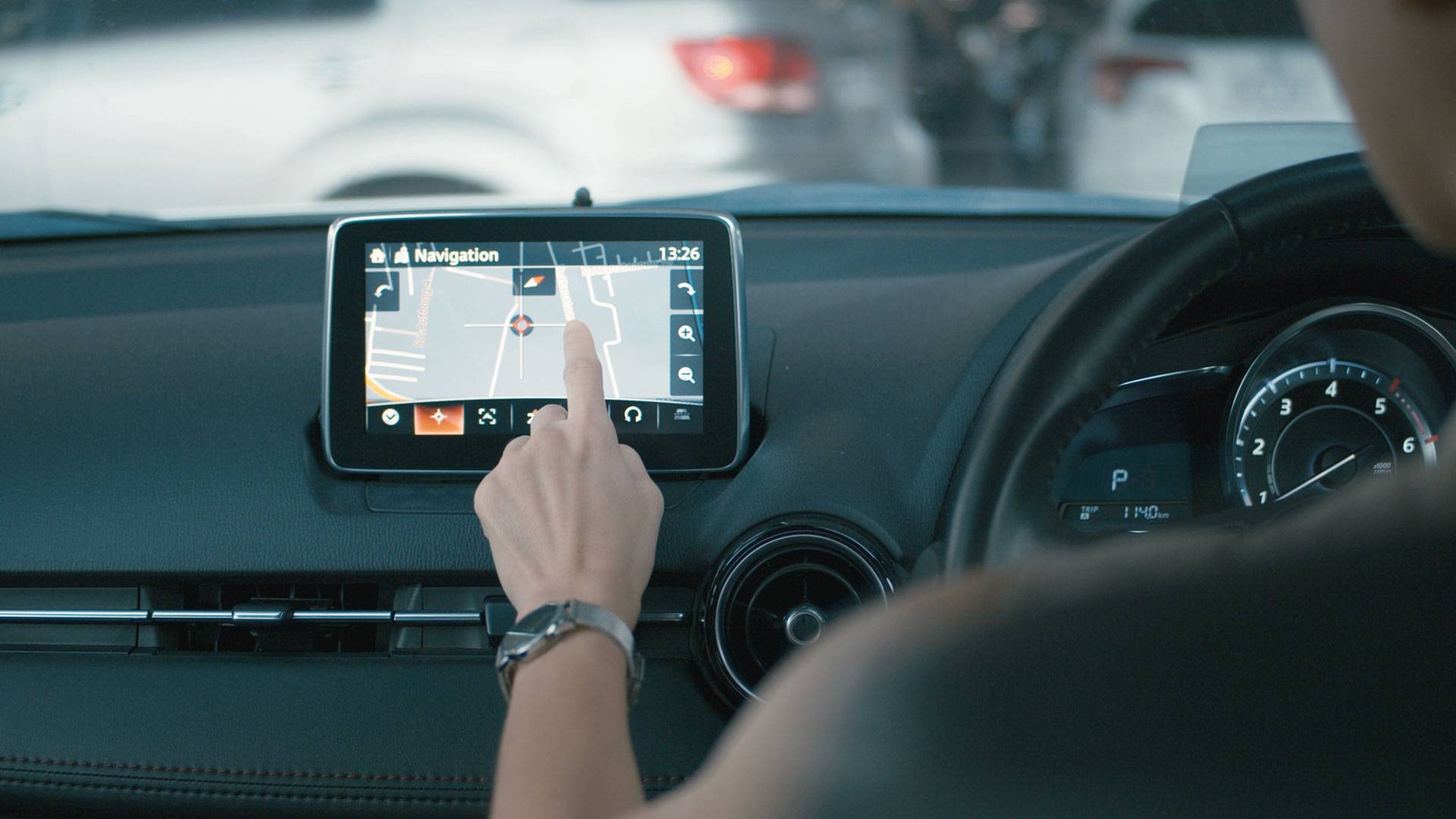
Digital Revolution and Transformation
The advent of the digital revolution marked a pivotal turning point for car screens. With the rapid advancement of technology, screens have evolved from mere navigation tools into sophisticated, multi-functional interfaces. The introduction of color displays, more advanced touchscreens, and enhanced graphics significantly improved user interaction and visual appeal.
This period saw the integration of various features such as real-time traffic updates, multimedia playback, and even internet connectivity, reflecting a leap towards a more connected driving experience.
The software advancements continued to develop, ushering in new features like voice recognition and personalized settings. This made the in-car screen a more interactive and responsive tool.
| 2007 - Voice Control Infotainment System: In 2007, Ford Sync brought the first-ever infotainment system with voice control to the market. This technology enabled drivers to enjoy hands-free calling and voice-controlled music playback while on the go. |
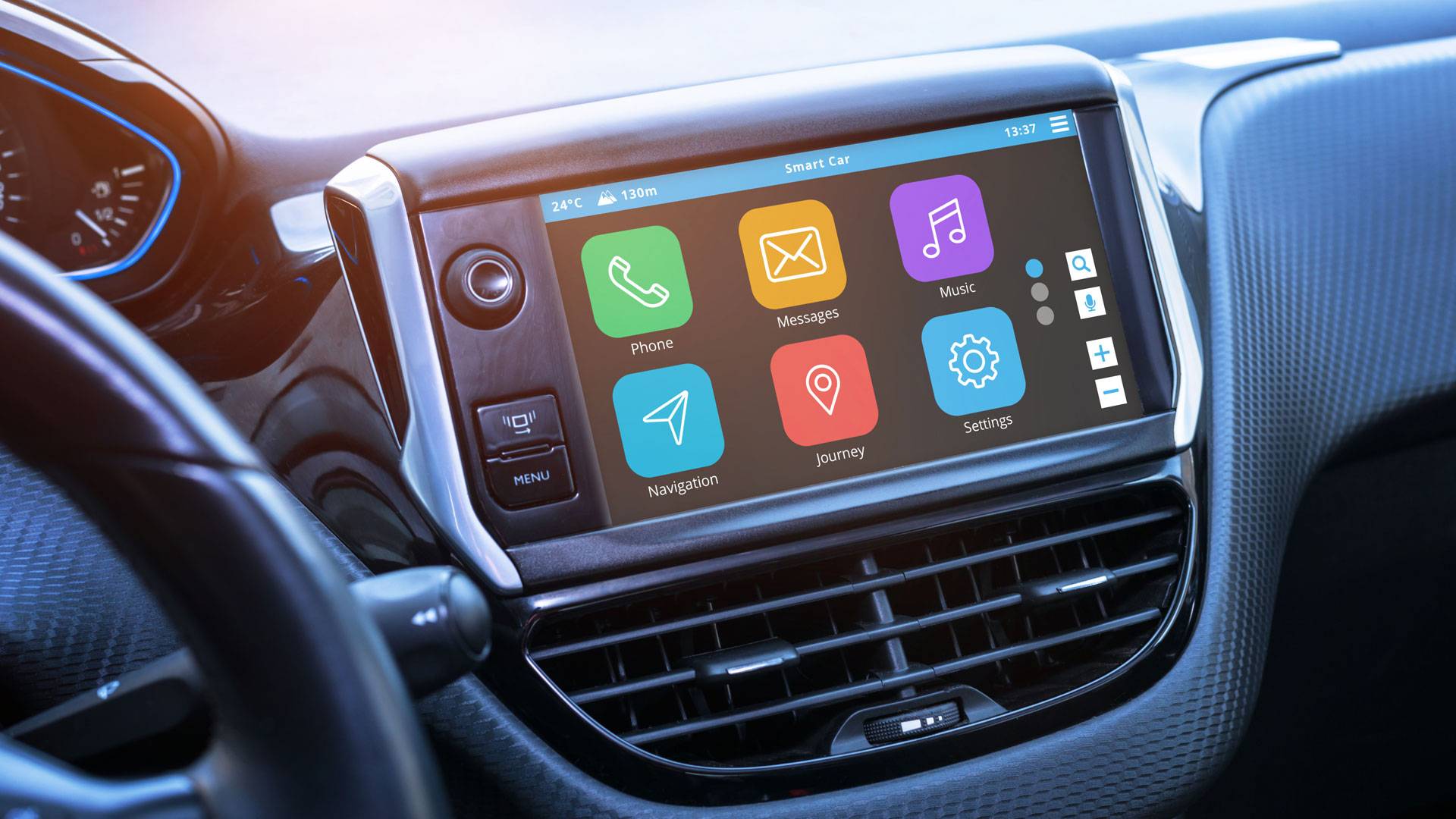
The impact of these innovations began to reshape the driver's relationship with their vehicle, turning the car screen into a hub for not just navigation but also entertainment, communication, and vehicle management. This evolution reflected a broader shift in how technology was being used to enhance everyday life, setting the stage for even more innovative applications in the future.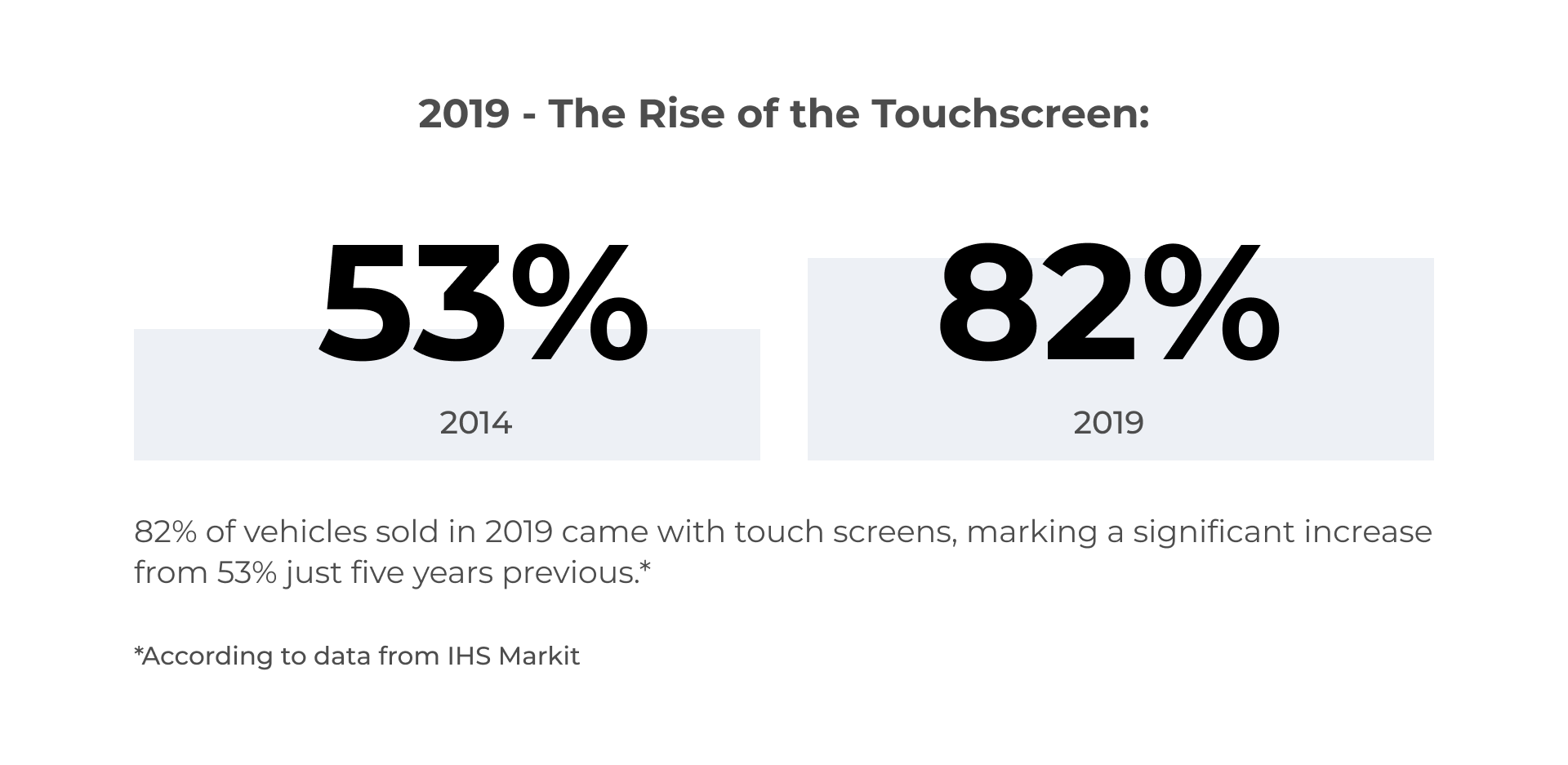
The Modern Car Screen: A Digital Assistant
The transformation of the car screen into an integrated digital assistant is one of the most significant advancements in automotive technology. It's no longer just a tool for navigation; it's a platform that enhances the driver's lifestyle, productivity, and goals.
Like a trusted co-pilot, the car screen can now suggest the best places to dine, alert drivers to the nearest fuel stations when their tank runs low, and even identify the closest supermarkets offering the best deals.
And 4screen stands at the forefront of this new driver interaction era.
The Driver Interaction Era
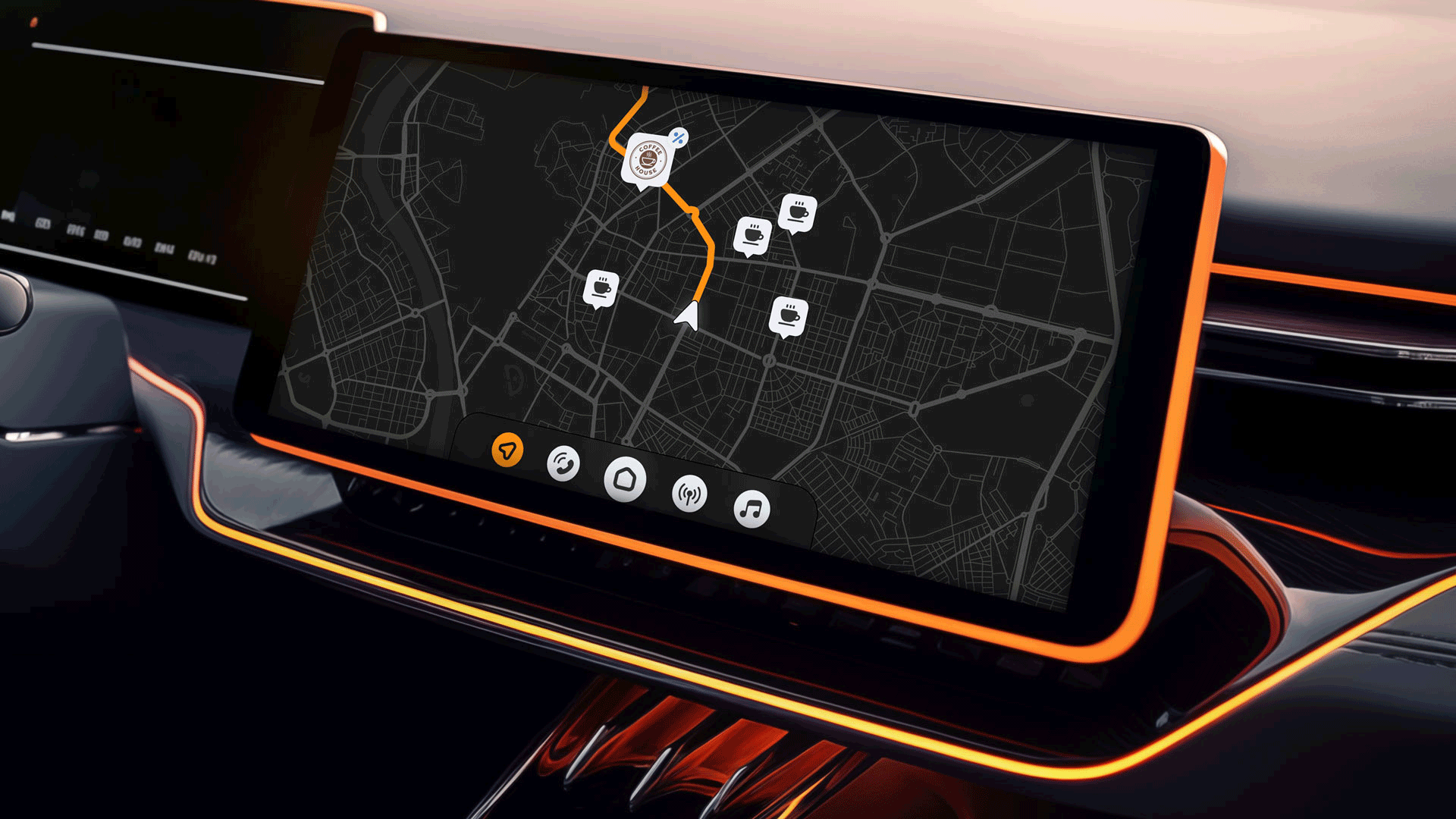
We are now living in the next phase of the car screen evolution. With the creation of three dynamic, advanced ad formats, 4screen is paving the future for connected mobility directly through the car screen:
Branded Pins help drivers discover ideal and optimal destinations by having the businesses appear on the car screen with their branded logo rather than standard industrial icons.
Sponsored In-Car Search helps drivers discover the very best options by having the most suitable and value-driven locations rank at the top of search queries.
In-Car Recommendations represent the pinnacle of personalization. These dynamic car screen prompts are triggered by specific driver needs, such as low fuel, low battery, or driver fatigue. These recommendations then connect drivers with relevant, nearby businesses, providing value and solutions that align with the drivers' immediate requirements.
This heightened level of interaction turns routine drives into experiences tailored to personal preferences and immediate needs, simplifying decisions and enhancing the enjoyment of every trip.
Join the Car Screen Revolution
The journey of the car screen from a simple navigational aid to a sophisticated digital assistant reflects a broader revolution in technology's role in our lives. For businesses, this evolution opens a new portal of engagement with customers, offering a suite of advertising formats designed to integrate seamlessly into this modern driving experience.
The road ahead is digital, and the time to act is now.
Book a meeting with one of our advisors today, and let's ensure your business doesn't miss out on the next prosperous phase of the car screen evolution.



